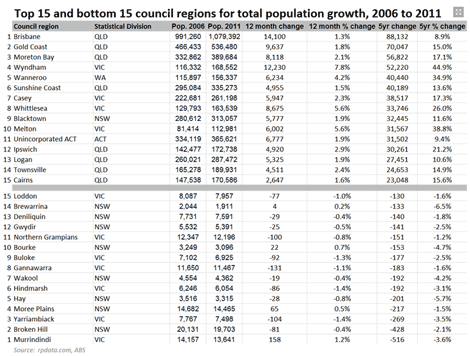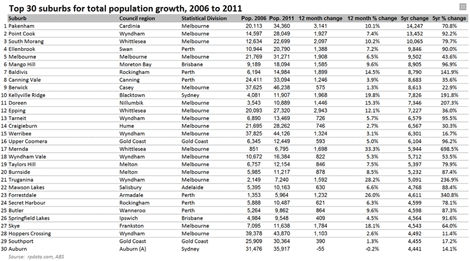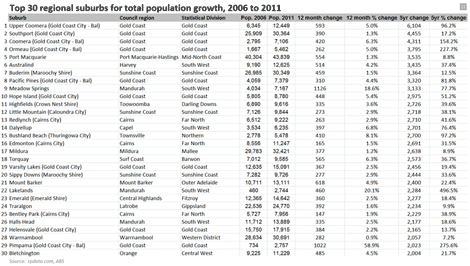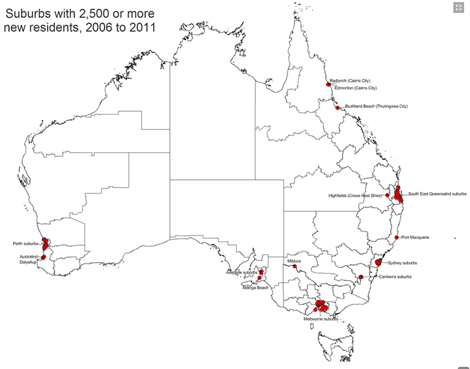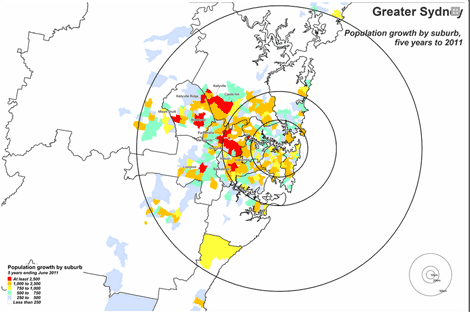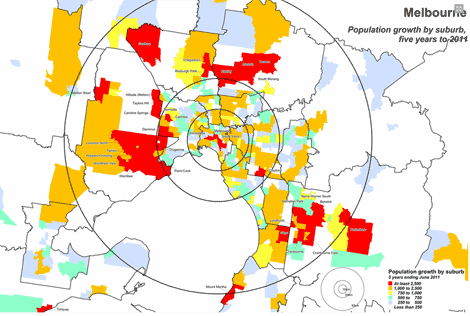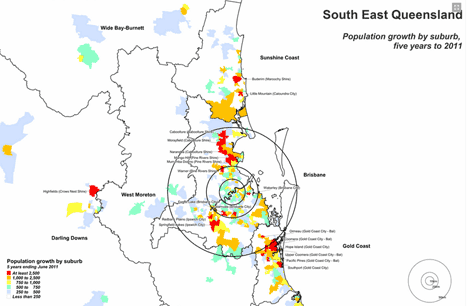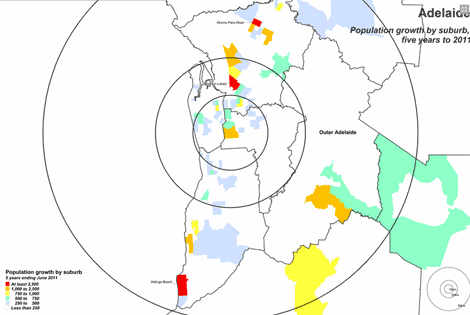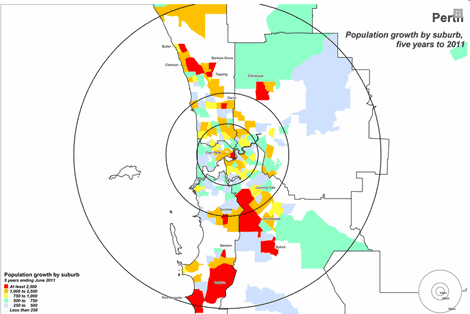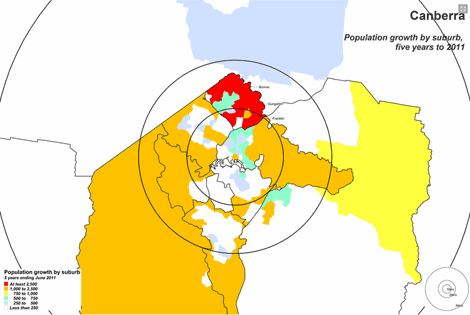Australians are moving from the countryside to cities (and city fringes): Tim Lawless
Population movements are an important element of housing demand; more people means more demand for housing. With Australia’s rate of population growth slipping from a high of 2.2% or 467,300 new residents over the year to December 2008 down to 1.4% (319,600 persons) over the year to September 2011, there has clearly been a fall in housing demand.
While the slowdown in population growth is a national phenomenon, there are still plenty of regions around Australia where, at least according to estimates from the Australian Bureau of Statistics, population growth remains quite rapid.
As can be seen from the table below, which shows the council regions around the country with the largest number of new residents over the past five years, Queensland continues to attract a large number of new residents. In fact many of the council regions that comprise south-east Queensland rank quite high in the top council regions list for population growth over the five years to June 2011.
The regions showing a population deficit are all rural locations, many of which have been recording a fall in population for some time. Each of the regions featured in the top 15 list below is recording a population lower than what was recorded not just five years ago, but 10 years ago. Of the 565 council regions around the country, 153 (or just over a quarter) of them have recorded a population decline over the past decade.
Click to enlargeMoving down to a more granular basis, at the suburb level there are some interesting trends. Almost 60% of the top 30 suburbs recording the highest population growth over the past five years are located across, in Melbourne and 20% are located around Perth. The only regional suburbs to market the top 30 list for suburb level population growth over the past five years were located on the Gold Coast (note that “regional” suburbs are considered to be any outside of the capital city statistical division boundary).
Four of the five suburbs that have recorded the largest number of new residents between 2006 and 2011 are located across the Melbourne fringe. The population in the suburb of Pakenham has increased by 14,247 new residents over the past five years. Over the 12 months ending June 2011 the population increased by slightly more than 10%.
Click to enlargeThe outer-Melbourne fringe areas (including the council regions of Wyndham, Melton, Casey, Whittlesea, Cardinia) are arguably one of the better examples of how a long-term planning strategy around land release, amenity development and infrastructure provision can be successfully implemented. The planning foresight extends back to the Kennett era and is probably one of the main reasons why new dwelling activity around Melbourne’s growth corridor has been so much more in alignment with population growth compared with other capital cities. Additionally, when you look at land prices across the outer Melbourne fringe, thanks to government policy that makes it easier and cheaper for land to be released and developed, Melbourne land prices are generally more than $100,000 lower than comparable locations in Sydney.
The top 30 suburbs for population growth across regional markets were mostly located at the Gold Coast (30% of the top 30 list) and the south-west of Western Australia, which includes areas such as Harvey, Mandurah and Capel (17% of the top 30 list).
Click to enlargeTo provide some further insights into the spatial patterns of population growth around the country and cities we have provided a series of thematic maps below. The population growth corridors are clear, generally following the path of rail or road infrastructure (highlighting the importance of connectivity). Interestingly, Melbourne and Perth are the only capital cities to show more than 2,500 new residents within the inner-city suburbs over the past five years, suggesting inner-city densification has slowed down in the other capital cities.
Australia
Click to enlargeGreater Sydney
Click to enlarge
South-east Queensland
Adelaide
Perth
Canberra
Tim Lawless is research director of RP Data.
